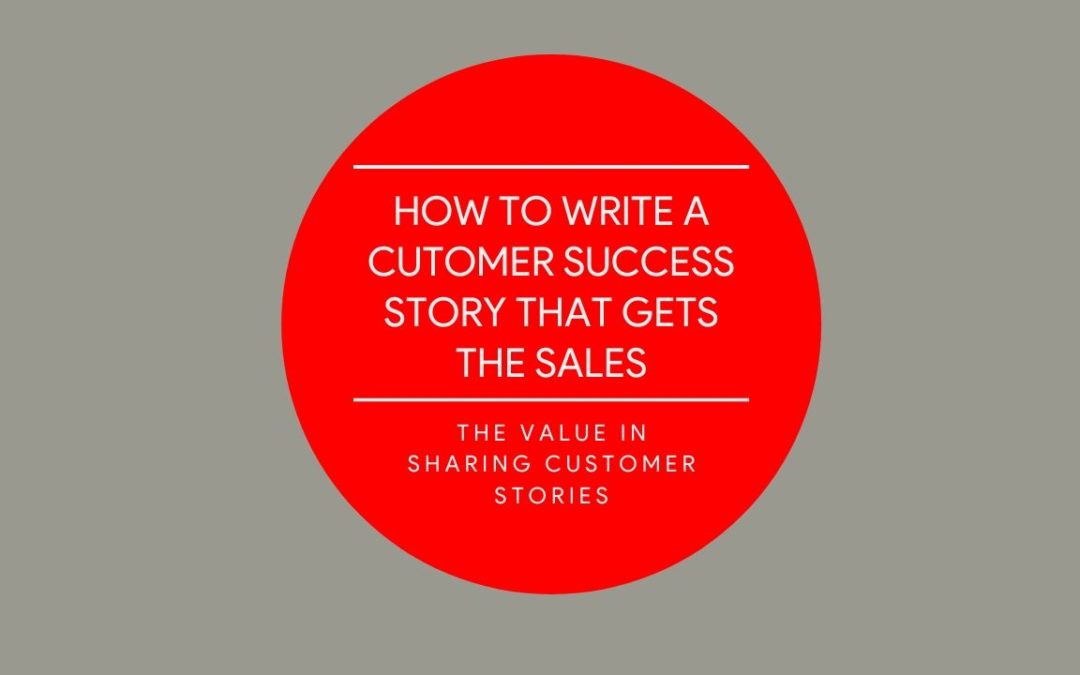Surely, there has to be value in sharing customer stories.
When it comes to driving sales and trust for your business, nothing comes close to sharing authentic customer stories!
There’s no fast rule for creating a perfect customer success story. But the best-performing stories have 3 parts:
- The challenge
- The solution
- The results
With that in mind, this is the perfect time to boost your content marketing efforts with customer success stories.
According to research by the Content Marketing Institute, “73% of B2B companies use case studies as part of their content marketing efforts. 45% of B2B marketers are using it to nurture their audience.”
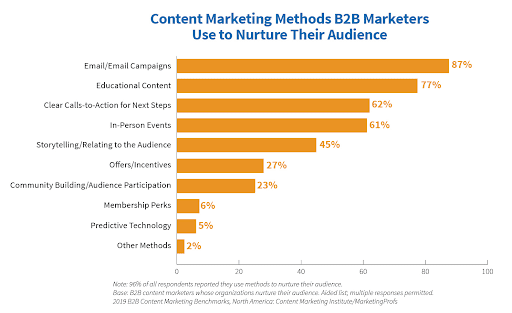
There’s a place for referrals, social shares, and brand mentions. So you should ask your customers for them — but a great form of advocacy for your brand is when a happy customer willingly shares their story publicly.
It doesn’t matter how happy the customer is, if they don’t share their success story, it’ll not benefit them nor your brand.
An authentic success story can tell a lot of stories, showcase what your product does and who it’s for, and highlight real-life examples of how to apply it.
Big brands such as LinkedIn, Amazon, and Instagram still share success stories from users, even though most people are already familiar with what the brand does. But success stories are important, so you need to share them.
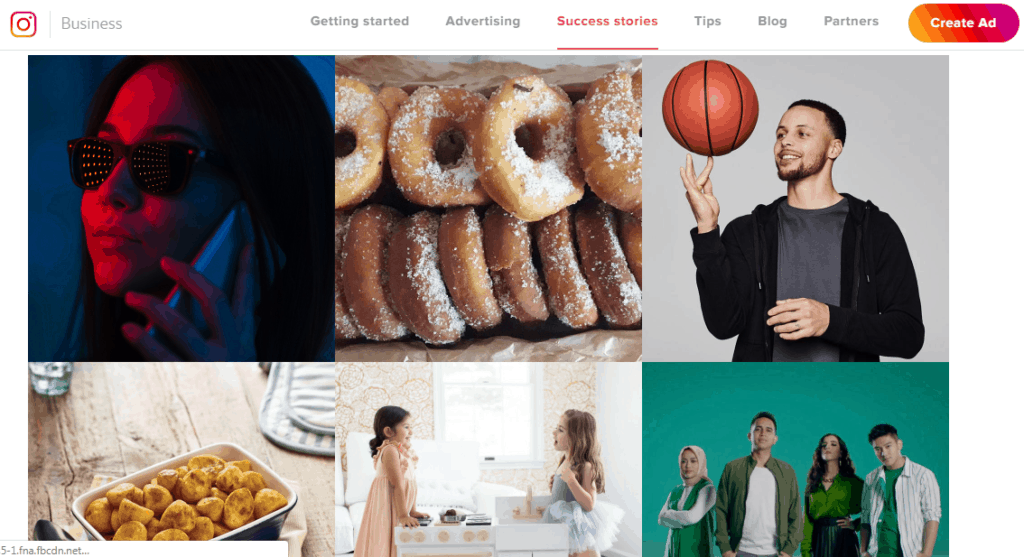
For small businesses, startups, and agencies, showcasing customer experiences via stories can be a great way to attract new clients, sell more products, and build a trusted brand.
What’s a Customer Success Story?
A customer success story is a piece of writing that showcases the customer’s experience with your product, the challenges they had before using your product, how the product helped, and what level of success they’ve achieved.
What’s the Difference Between Customer Success Story and Customer Case Study
TL;DR: customer case study deals with facts while a customer success story highlights the experiences.
In the B2B marketing environment, a lot of people view customer success story to mean the same thing as a customer case study.
Although they have a lot in common with the end goal of building trust with potential customers and existing ones, they’re not the same.
At different stages in the marketing funnel, marketers can use them.
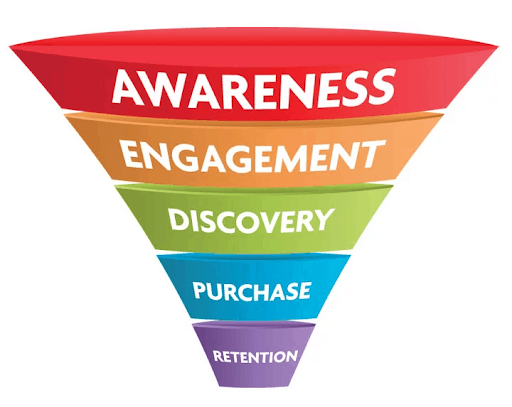
A customer case study report details the problem that a customer had, the solution that your business delivered for them, and their results.
You have to end it with data and identifiable metrics that show revenue growth, leads, overall ROI, as well as how the product helped the customer. It’s more a less a scientific report.
Software companies use case studies to show how their users grew traffic numbers, automated manual processes, and increased revenue — we’re assuming that’s what the software is designed to accomplish.
Salesforce is a good example. See the success story page:

Potential clients need to see case studies because of the fact. This is the type of data they can send to the CEO or investors to convince them, during a presentation or board meeting.
On the other end of the spectrum is customer success stories. How powerful can that be? Well, 86% of customers will pay more for a better experience.
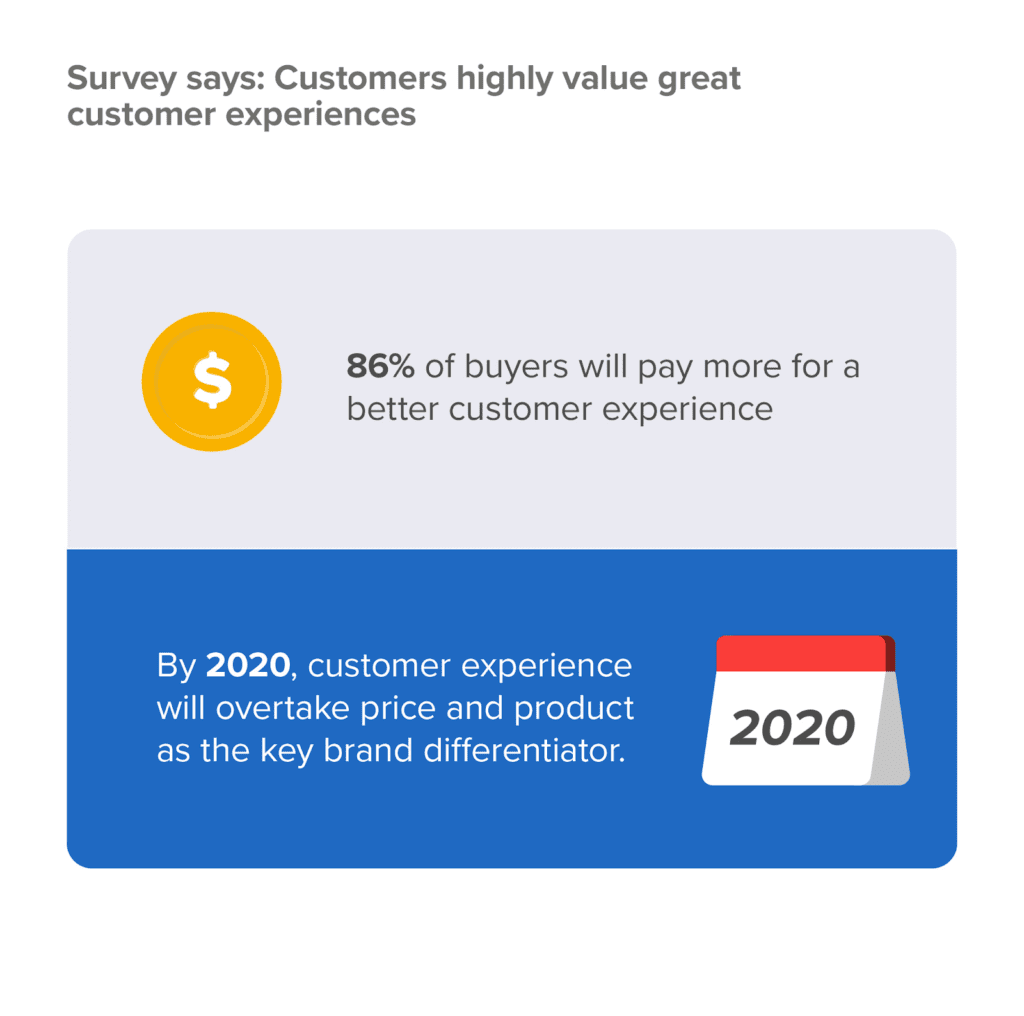
This time, you’re not after the hard facts and data points. It’s all about the customer experiences. You’re using persuasive techniques here with an emotional undertone to tell a customer’s story.
Whereas a customer case study shows a 119% increase in revenue, a customer success story shows how the person’s life has been transformed as a result of that increase.
Success stories work best at the consideration stage of the marketing funnel — when the lead is still skeptical about the product and what it can do for their business (and still exploring several options).
Emotional impact wins over hard facts when potential buyers need to make a decision right away.
A company’s accounting department and managers will benefit a lot from case studies — because all they care about is the numbers.
However, decision-makers (e.g., stakeholders) will like to cut to the chase once the facts are well reported. They’ll often ask “are there success stories?”
How to Create Engaging Customer Success Stories
While most companies have high-performing marketing teams behind their websites and products, stories from the actual users of the product will better drive the message to the limelight.
What you say about your product is important, but what the customer says about it will make more impact on your industry.
That being said, let me show you simple tips for creating an irresistible customer success story.
1. Identify Your Best Customers
You want to begin with your greatest asset — the active and happy customers.
A happy customer will tell 9 people how happy they are, according to research by Bain.

You know they’re happy and committed because they have purchased several of your products or have renewed their monthly/annual subscription multiple times. So they’re no longer passers-by.
Look out for customers who tweeted your post, referred new users, quoted the founder in their posts, or went the extra mile to write a review of your product.
If your product involves constant usage, then look for customers who always log in.
They should have a story to share.
If you’re just getting started with fewer customers, then start with the ones you have. Then you can refine as your company grows.
2. Define the Situation
Every story must have a hero. After making a list of your top customers to reach out to, it’s time to define your hero. You also need a scene — so the first scene is an introduction into the hero’s world.
This is where the magic happens. Because the beginning every story will determine whether or not people will read through (or watch everything, in the case of a video success story).
In defining the situation, remember that your customer is probably a company. So share a bit about their history and mission.
- Briefly highlight their goals
- A brief demo of their company culture
- Highlight a few things that led them to your product/website
- Don’t forget to mention the people behind the brand.
This important phase of the customer success story is where you empathize with them and draw the reader in. You humanize the business — making it relatable for potential customers.
4. What’s the Challenge?
This is a question you should answer in your customer success story.
The customer’s challenge is primarily why people should read or watch the story. If the customer struggled to increase team productivity, for example, make it clear and obvious.
Coveo highlights the challenge that Sungard experienced before coming to them.
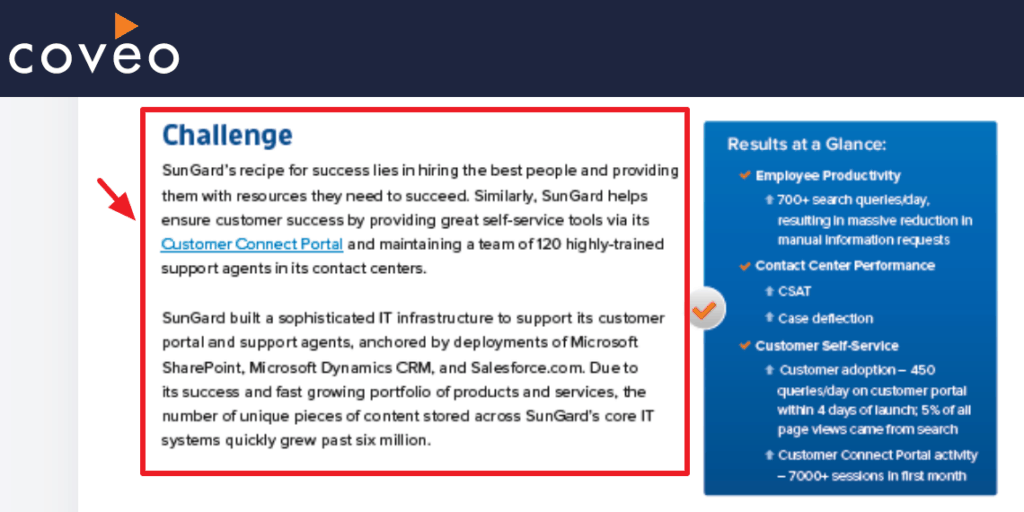
As is the case with relatable stories, you need to use the same language that your target audience will understand.
There’s no need for attempting to use jargon or industry terms that will confuse people.
The protagonist, in this case, might be competitors. So you can share in a sentence or short paragraph how the competition dominated them.
For a B2B company, the challenges might be similar to any of these:
- Getting leads
- Converting leads
- Getting work done
- Effective communication
- Saving money/making money
And some derivatives such as simplifying the work process, automation tasks, reducing risks, effective hiring processes, etc.
5. The Solution
The “solution” part of your story is important because it focuses on the customer, how they found you (mention the channel, if not on your website), what motivated them to buy and use your product.
Here’s an example from Adore Beauty, and how the company benefited from its partnership with ConversionXL
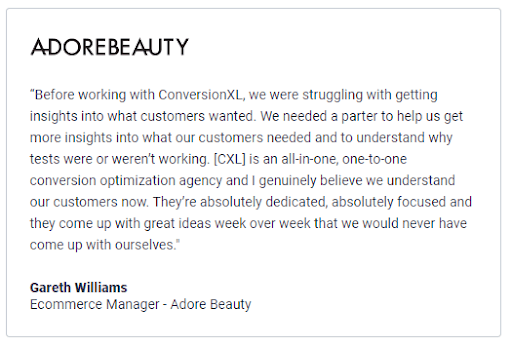
It doesn’t have to be all rosy before you can share it. For example, if the customer discovered your product or website from a bad review online, you should share it as a way of canceling the effect of that bad comment.
In this section, you may also ask the customer to share what products they were using before discovering yours.
Don’t forget to infuse the real work that the customer did. Don’t just paint your product as the best that works even if the user doesn’t use it or do the work. If there are challenges of using your product, highlight it as well.
For example, Noah Kagan, founder of Sumo didn’t just share a success story on how Crazy Egg helped his business, he shared practical ideas about what he did to get the results. (underlined in red).

Overall, you’re bringing solutions to a bad situation. Put the spotlight on the customer and listen to them as they share their story (the good & bad sides). Don’t try to dilute it — be transparent!
For one, the customer will not be happy you edited or polished their story. If they made grammatical errors, leave it as it appears, use the blurred pictures as they’re — don’t improve it.
6. The Results
The reason why the challenge and solution come first is that most people can relate better with the ‘processes’ rather than the result.
A good example is Large Open University’s success story. They share results as well as how they’ve enjoyed the process. You should learn that, too.

More so, results don’t help anyone. For example, if I come across a customer success story that only highlights the results, how is that going to help me make decisions.
Most customer success stories will have a happy ending. And it’s expected because the solution should work, otherwise there’s no point in sharing it in the first place.
- When sharing the results, make it brief.
- Show the tangible experience (e.g., ‘company X’ got more done in 24 hours than in 7 days)
- Infuse personality here, after all, it’s all about the customer experiences (e.g., Redmg has a great team, Jace Vernom is fun to work with).
You can also reiterate your company’s mission statement in closing. This works great because it shows that your company hasn’t failed in their decision to help businesses (or whatever the goal might be).
In the words of Erica Keswin, a contributor at the Harvard Business Review:
“customer success stories can ultimately become part of your company’s mission statement.”
AgileCRM’s customer success story can be a good inspiration. It’s brief, straightforward, and factual:

Best Strategies for Crafting Compelling Customer Success Stories
What’s even better than a happy customer?
It’s the best asset your business can ever have. It’s as valuable as your goodwill and culture. In this section, you’ll discover some best practices for crafting winning customer success stories. Let’s dive in…
1). Ask the right questions
When interviewing your most engaged customers for their stories, do it deliberately. Ask open-ended questions so they express their inner thoughts.
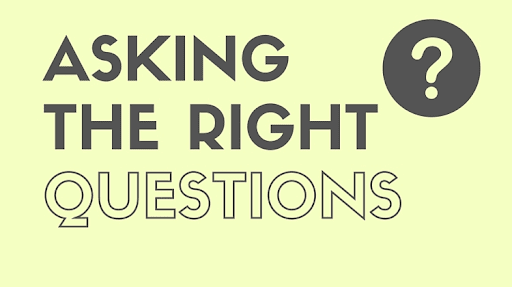
Close-ended questions will only force them to provide linear answers, which isn’t helpful.
Here are some examples of open-ended questions to ask a customer:
- What was business like before you found us?
- What challenges did you face a few months before using our product?
- What impact did our product make in your business/life?
Avoid close-ended questions, here are some examples:
- Did you struggle with generating sales before you found our website?
- Did our product help you find better keywords?
- What revenue levels are you seeing right now after using our product?
If it’s a video interview or you’re sending a questionnaire to your customer, clearly state the importance of their honest answers. This is important because 79% of buyers use case studies to research B2B purchase decisions.
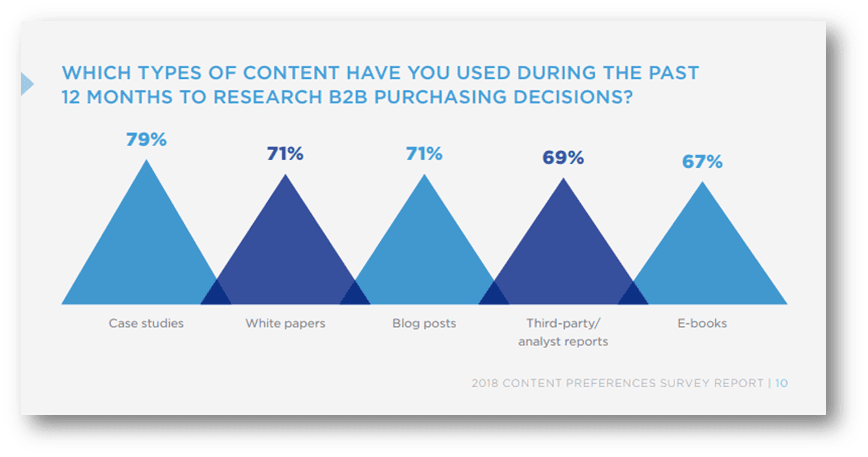
Make sure you appreciate them and let them know they’re among the few customers who have been selected to participate in this survey or interview, as the case may be.
Remind them of the value they stand to gain from participating and how great it’ll make them feel.
Above all, remind them of how much impact they’ll make in people’s lives by sharing their experiences with your product and brand.
Remind them of the value that they’ll get from taking part and how good it’s going to make them look.
Ask questions that will show the transition.
The customer should be able to share a clear picture or story of what life was like before and after using your product.
2). Highlight the ROI at Every Section
Businesses want to see how your product has delivered a good ROI to customers. That’s why you should, as much as possible, frame the results of your customer story in terms of the ROI they generated.
Here’s an example from the World Fishing Network, Wishpond highlights the ROI:
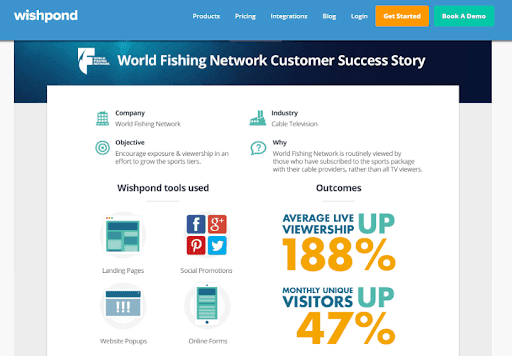
That doesn’t mean your customer success story should be fact-based, but mentioning the results while sharing interesting thoughts is a great way to draw the right people in.
Here’s another reason why you should do it:
Your target audience would easily translate the presented ROI results to their current business. It’ll get them more engaged and interested in the success story.
3). Add a call-to-action (CTA)
Businesses don’t share customer success stories just for the fun of it. They want to drive leads and sales.
Since success stories are a type of marketing content, you can use it to nurture your audience and get new clients and customers to sign up.
Adding a clear CTA tells the reader what next step to take, why they should take action, and what they stand to gain. For example, HelpScout shares Springboard’s success stories using both videos and written format:
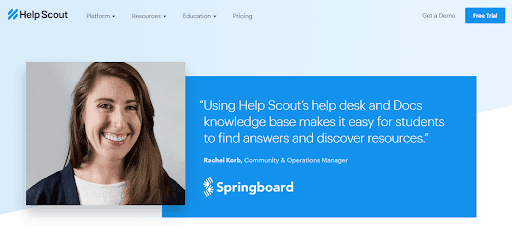
At the end of the success story, HelpScout highlights the client’s best features and then includes a CTA for readers (i.e., businesses) to ‘Get Started’ with their (HelpScout) solution. Isn’t that noble?
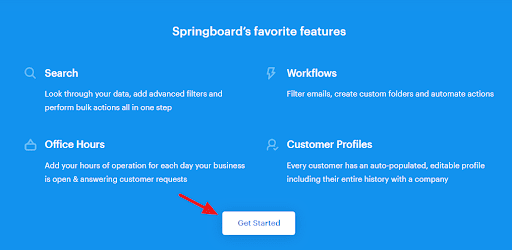
You don’t have to promise them the same result other customers got (make a disclaimer), but give them an idea of what lies ahead.
You could link to a relevant blog post, a tutorial video on YouTube, a subscription form, or a free trial of your software.
Make sure the page you’re sending them to is persuasive, valuable, and tie in with your marketing goals.
Conclusion
Your happy customers deserve more!
They want their stories to be heard, but you need to step up and ask them to share them.
Don’t just add customer success stories to a page that’s probably buried on your website. From time to time, feature it on your homepage or blog and share it with leads in your sales funnel. Smart marketers can even use it in paid ads.
There’s no limit to what you can do with an authentic customer success story. You can use it in your social media posts, videos, online courses, or embed them in your eBooks and white papers.
I’d love to hear from you. What are your thoughts on customer success stories? Do you use them in your inbound marketing strategy?
